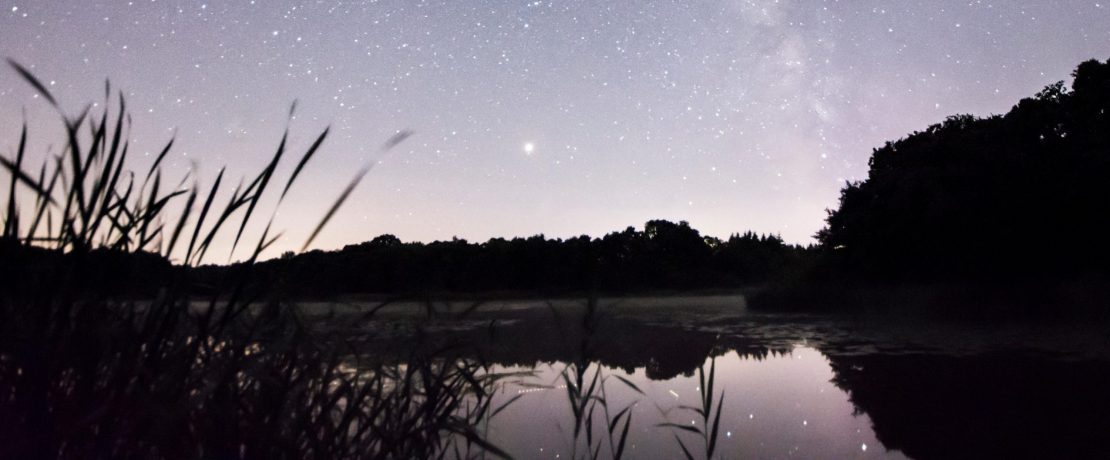The South Downs after dark
Nature writer and artist Tiffany Francis-Baker ventures out on a nocturnal expedition of the South Downs – and finds an extraordinary sense of tranquillity.
I had been visiting Kingley Vale for as long as I could remember, perched on the edge of the South Downs National Park where I had grown up (and still lived), just 16 miles away in east Hampshire.
I knew the place well by daylight, but now I was climbing a steep dirt track in pitch darkness, slipping through mud and grasping onto branches to guide me through the forest.
I emerged, at last, onto a hilltop clearing where the trees disappeared and I was exposed to the sky, a sparkling canopy infused with the glow of a white, waxing moon.
Laid out below were the green lanes and church spires of West Sussex, hidden in the dark, and above I could hear the soft voices of migrating redwings calling seep-seep-seep to the starlit night.

I was here as part of a year exploring our landscapes after dark to see how we connect with the natural world when the sun goes down, travelling around Britain and northern Europe to find hidden worlds under the stars.
In our anthropocentric, pressurised modern world, gazing up at the night sky can help us feel reassuringly insignificant – and our daily problems and worries even more so.
At the same time, we can find empowerment in how fortunate we are that the exact cluster of atoms came together to form us, with our exact minds and bodies, and how lucky we are to be alive on this earth.
For me, the night is a time for peace and solitude, a chance to experience the landscape when the rest of my species is asleep, and so many others come to life.
The long night
Light pollution is reducing our ability to admire the night sky all over the world. This has become a growing problem for wild species that rely on their circadian rhythms to feed and breed, such as birds singing the dawn chorus.
Their early morning song takes place before it is light enough for the birds to navigate and forage for food, so singing earlier means they are increasing their efforts without the opportunity to replenish their energy stores immediately afterwards.

For humans, being able to observe the night sky is a vital reminder of our place in the universe – that we are only one species in an ecosystem of billions. The long night is also one of winter’s most beautiful spectacles and can help us cope with the darker half of the year when we may experience varying degrees of seasonal affective disorder.
When summer fades and we can no longer rely on sunlight for a burst of energy, we can turn, instead, to the night sky, just as our ancestors have done for thousands of years before us. For, as Lord Byron wrote in his poem Manfred, at night we can learn ‘the language of another world’.
This article was originally published in CPRE’s award-winning magazine, Countryside Voices. You’ll have Countryside Voices sent to your door three times a year, as well as access to other benefits including discounts on attraction visits when you join as a CPRE member. Join us now.









